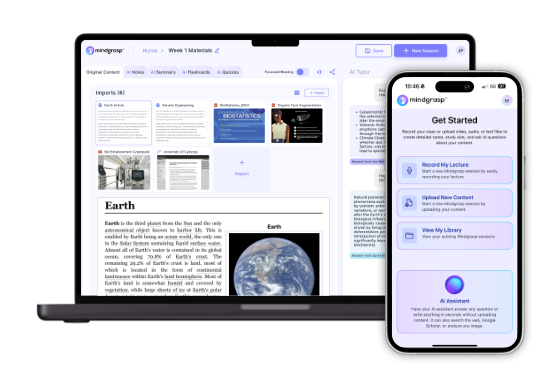
To cram for physics, we need to be strategic.
First, prioritize high-impact topics from past exams and focus on understanding concepts, not just memorizing formulas. Gather your materials, create a one-page cheat sheet of key equations, and use active recall instead of re-reading notes.
Draw diagrams to visualize complex processes, and solve practice problems under timed conditions.
Don't forget short breaks—your brain needs rest too! The sections below will transform your last-minute studying.
Why cramming for physics feels harder than other classes
While you might successfully pull an all-nighter for history or literature, physics has a way of making last-minute studying feel like climbing Mount Everest in flip-flops. Why? Physics isn't just about memorizing facts—it's built on complex concepts that stack on each other like building blocks.
When we're cramming for a physics exam, we're not just trying to remember formulas, we're struggling to understand how everything connects.
Here's what makes physics cramming so tough:
- Each new concept builds on foundational concepts you learned earlier
- Problem-solving skills can't be developed overnight
- You need to bridge theoretical knowledge with practical application
- Formulas aren't helpful if you don't know when to use them
- Practice problems require time—something you don't have when cramming
Boost Your GPA Faster with Mindgrasp
Instantly turn your class notes into smart summaries, flashcards, and quizzes—study less, learn more, and ace your exams.
Try it FreeStep 1: Determine what to study (Prioritize high-impact topics)
So you're feeling overwhelmed by physics cramming—that's completely normal!
Let's tackle this systematically by determining what to study first.
Start by reviewing your syllabus and any study guides provided—these are goldmines for identifying key concepts your professor deems important.
Next, prioritize high-impact topics that:
- Appear frequently in past exams (definitely review these!)
- Take up significant portions of your course content
- Give you the most trouble (mastering these gives the biggest payoff)
Don't waste precious time on minor details when major concepts need attention.
Once you've identified your priority list, focus on understanding those fundamentals and working through related practice problems.
This targeted approach maximizes retention and gives you the best chance of success!
Step 2: Gather your physics materials and make a quick plan
The right materials and a solid game plan can make your physics cramming way more efficient!
Let's start by gathering your physics materials—lecture notes, textbooks, past assignments, and any practice problems your teacher provided. Having thorough resources at your fingertips saves precious time.
Next, we need to organize everything by topic and create a simple study plan. Prioritize topics based on what your teacher emphasized in class (they're probably important!).
For each study session:
- Set realistic goals (like "master 5 kinetic energy problems")
- Review key concepts before diving into problems
- Schedule short breaks to keep your brain fresh
This approach helps maintain motivation and track progress as you work through material.
Remember—even with limited time, a structured approach beats random reviewing!
Step 3: Use active recall to study physics (Don’t just re-read)
Now that you've got your materials ready, let's talk about how you'll actually study—and spoiler alert: simply re-reading your notes won't cut it!
Active recall is your secret weapon for maximum memory retention. Instead of passively scanning your textbook, test yourself constantly:
- Flip those flashcards and recall formulas before checking if you're right
- Practice solving problems without peeking at solutions first (yes, even the hard ones!)
- Summarize concepts in your own words—pretend you're explaining to a confused friend
- Join group discussions where you can quiz each other on physics topics
This approach forces your brain to work harder, which actually helps reinforce understanding.
It might feel more difficult than re-reading, but trust us—your brain will thank you when you're confidently tackling that exam tomorrow!
Step 4: Break down complex physics processes with diagrams
Pictures truly work wonders when cramming for physics—they're your brain's best friend during last-minute studying! Complex physics processes become much clearer when we transform them into visual representations.
Here's why diagrams are essential:
- Flowcharts break down energy transformations step-by-step, showing exactly which equations to use when.
- Free-body diagrams make Newton's laws actually make sense by showing all forces acting on an object.
- Labeled diagrams (with units!) help you remember formulas during the exam.
Create a set of annotated diagrams covering topics like kinematics and thermodynamics for quick review. Trust us—your brain processes visuals faster than walls of text!
Even a simple sketch can untangle complicated concepts and save you precious time when you're in crunch mode.
Step 5: Leverage AI study tools like Mindgrasp AI for physics
When cramming for physics has you feeling overwhelmed, AI tools for physics students such as Mindgrasp AI can become your digital study buddy! We've found that these smart assistants are game-changers for last-minute exam preparation.
Try Mindgrasp for Free!
Experience an easier, faster way to boost your GPA. Sign up now to try Mindgrasp AI for free and see how AI-powered learning transforms your study routine.
Try it FreeHere's why Mindgrasp AI works wonders:
- It creates personalized study plans that focus on what you need most.
- You'll get practice problems tailored to your specific understanding level.
- Its interactive quizzes quickly reveal which concepts you've mastered (and which need work).
- The real-time feedback helps you learn from mistakes instantly.
Instead of wasting precious hours flipping through textbooks, we can use these AI study tools to zero in on essential physics concepts.
Mindgrasp AI condenses complex topics into bite-sized summaries—perfect when time's running out before that big exam!
Step 6: Memorize key terms and definitions with flashcards & mnemonics
Armed with AI tools to guide your study path, let's build your physics vocabulary muscle! Creating flashcards with key terms on one side and definitions on the other is a game-changer for active recall during those late-night study sessions.
We recommend these quick strategies:
- Shuffle your flashcards regularly to test yourself from different angles
- Add visual aids to connect abstract concepts with images you'll remember
- Create mnemonics for tricky formulas (just like PEMDAS helps with math operations)
- Have a friend quiz you to simulate exam pressure
Don't just read your notes passively—actively engage with the material! When you create and review flashcards, you're forcing your brain to memorize important definitions in a way that sticks.
Plus, the physical act of writing helps cement those concepts in your memory.
Step 7: Practice with questions and problems
Plunge into practice problems right now—they're the secret weapon for physics exam success!
We've found that tackling both numerical questions and conceptual questions dramatically helps improve retention when you're cramming.
Here's our approach:
- Find past exam papers to get familiar with the exam format (professors often reuse question styles!)
- Time yourself while solving problems to build better time management skills
- Review your answers carefully—understanding why you got something wrong is as valuable as getting it right
- Mix up problem types to keep your brain engaged—don't just stick to the easy ones
Step 8: Take short breaks and look after yourself
Even the most dedicated physics students need to recharge! We recommend breaking up your study sessions with short breaks every 25-30 minutes. These pauses aren't wasted time—they actually improve focus and retention by giving your brain a chance to process what you've learned.
During breaks, try:
- Standing up and stretching
- Taking a quick walk
- Hydrating with water (aim for 8 glasses daily)
- Grabbing healthy snacks like nuts or fruit
Don't underestimate how physical well-being affects cognitive function! Proper hydration keeps your mind sharp, while nutritious snacks provide steady energy.
Most importantly, prioritize sleep before your exam—7-8 hours is ideal for memory consolidation. Remember, a well-rested brain solves physics problems much better than an exhausted one!
Cramming for physics in 1 Day, 3 Days, or 1 Week
Let's look at how your cramming strategy changes based on your timeline.
With a full week, you'll want to space out your study sessions, tackling the toughest concepts first and working through practice exams to build confidence.
If you've only got three days, create a tight schedule that divides topics evenly, focusing on combining lecture notes with textbook material and practicing problems daily.
For those last-minute 24-hour crammers, your best bet is to zero in on key formulas and concepts, then spend most of your time solving practice problems that reinforce those fundamentals.
Cramming for physics with one week left
When you have a full week before your physics exam, you're actually in a pretty good position to prepare effectively. Start by organizing your study time into daily chunks focused on different topics. We recommend prioritizing the key concepts and formulas your teacher emphasized in class.
Don't just read passively—solve lots of practice problems! This active engagement helps cement physics principles in your brain and boosts your cognitive function. Create flashcards for quick formula review, and consider joining a study group to explain concepts to each other (teaching something is the best way to learn it!).
Remember to:
- Schedule regular breaks
- Get enough sleep each night
- Eat well to fuel your brain
- Review past exams for likely question types
With consistent effort across the week, you'll be ready!
Cramming for physics with three days left
Three days before your physics exam represents a critical window where focused, strategic studying can still make a huge difference.
It's time to create a detailed study schedule that divides your remaining hours effectively.
We recommend these proven strategies:
- Review notes and highlight topics your professor emphasized most
- Create a compact study sheet with essential formulas for quick reference
- Tackle practice problems in areas where you're least confident
- Use active learning by explaining concepts aloud (even to your stuffed animals!)
- Simulate test conditions by timing yourself on practice exams
Cramming for physics with one day left (24 hours)
With just 24 hours remaining before your physics exam, you're facing a critical situation that requires laser-focused attention. We need to optimize every minute now!
Start by creating a one-page study guide with essential equations and concepts—only the truly important stuff. Break your day into manageable chunks (2-3 hours each) with short breaks between to keep your brain fresh.
Dedicate the bulk of your time to solving practice problems that mirror exam questions, focusing on strengthening your problem-solving strategies.
In the final hours, use active review techniques like explaining concepts aloud or testing yourself with flashcards. This reinforces your understanding better than passive re-reading.
Remember—at this point, depth trumps breadth. It's better to thoroughly understand core concepts than to skim everything superficially.
Stay hydrated, get some sleep, and trust your preparation!
Common mistakes to avoid when cramming and how to fix them
Despite our best intentions, many of us fall into predictable traps when cramming for physics exams—habits that waste precious study time and limit our understanding.
Let's fix these common mistakes:
-
Don't just memorize formulas—focus on understanding concepts and how they apply to different problems.
-
Never skip practice problems—they're your best tool for reinforcing knowledge.
-
Avoid passive learning (just reading or watching videos)—engage actively with the material instead.
-
Don't try to study everything in one marathon session—take regular breaks to maintain cognitive function.
-
Remember that proper sleep and nutrition are essential—your brain needs fuel and rest to process all that physics!
Final Takeaways on physics cram studying
Let's wrap up our physics cramming advice with some final thoughts that'll stick with you long after exam day. While cramming isn't ideal, it can work if you do it right!
Remember these key points:
-
Focus on practice problems—they're way more valuable than just reading notes.
-
Prioritize key concepts and formulas that'll likely appear on your exam.
-
Follow a structured study schedule (even if it's just for a day or two).
-
Join study groups to clarify tough concepts—two brains are better than one.
-
Maintain a positive mindset—your attitude affects your exam performance.
Ultimately, effective physics cramming is about quality over quantity. Manage your stress, take short breaks, and trust what you've learned. You've got this!
Download Mindgrasp from the App Store
Access Mindgrasp at your desk for in-depth research and writing projects, or use the mobile version to easily access your content on-the-go or record live lectures.
Download the iOS App
